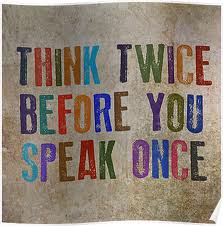Acing a Difficult Conversation
Shawnee Love •
April 8, 2014
Last week, we introduced difficult conversations.
When pointing out a performance shortfall or issue with body odour, grooming, clothing, word choices, or personal tics and habits, these conversations are hard. You are calling out that the employee is doing something wrong or bad, and no one likes to hear it.
But the point of that type of conversation isn’t to highlight the bad, it is to improve the behaviour. Unfortunately, you often need to identify how performance falls short of the standards in order to help someone see the need to improve.
Thus, the most important thing to remember when having a difficult conversation is that you are bringing up the problem:
because you care and want the individual to succeed.
Let that intent ground and guide all your difficult communications.
Next, always remember to THINK before speaking. Consider how to frame your feedback in a way that meets the following expectations:
T- True. Is what you are saying true for you (i.e., an opinion) or true for everyone (a fact)?
H- Helpful. Are you being constructive, i.e., providing suggestions and/or solutions rather than simply calling out the behaviour.
I- Insightful. Is your feedback new and/ or unknown to the individual? Will it shed new light?
N- Necessary. By not speaking, will the individual be harmed or hampered?
K- Kind. How can you be as gentle and/or subtle as possible while still getting your point across? This will include finding a private, comfortable setting and the right time to approach the topic.
T.H.I.N.K. before you speak.
Let the difficult conversations begin.





